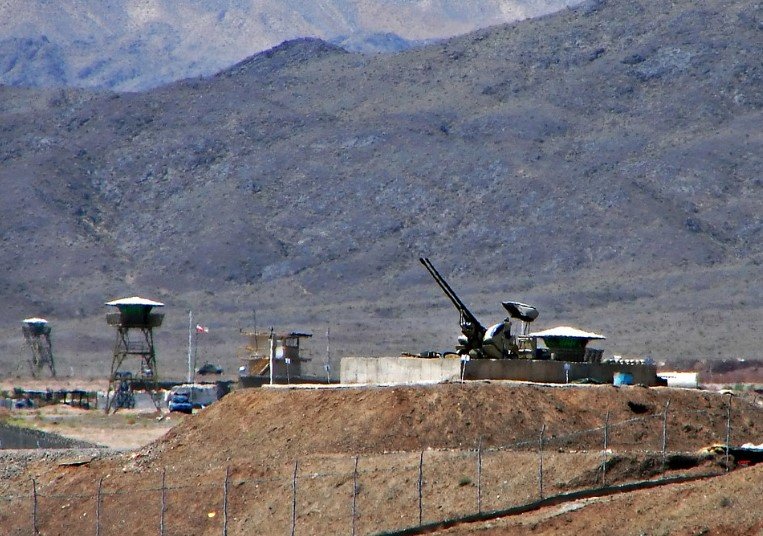American jets pounded Iran’s nuclear infrastructure last week—but left Isfahan’s sensitive reactors untouched. Satellite images now suggest it wasn’t an oversight.
As images trickle in and the dust begins to settle, it’s becoming clear that U.S. military planners were precise about what they didn’t hit. Especially at Isfahan, where three miniature research reactors sit—one of them running on bomb-grade uranium.
The Blasts Came Close—But Not Too Close
From above, the Isfahan Nuclear Technology and Research Center looks mostly intact. Sure, damage is visible across the campus. Singed warehouses. Cratered roads. Debris trails.
Senior officials in Vienna, speaking privately, confirmed what many suspected: the U.S. deliberately avoided striking them. Four sources familiar with real-time intelligence briefings told Bloomberg that avoiding a meltdown or radiological disaster was non-negotiable—even in wartime.
One European diplomat said, “The line was drawn at reactors. The U.S. knows the playbook—and what happens if you cross that line.”

A Reactor Running on Weapons-Grade Uranium
Among the most sensitive assets at Isfahan is a small neutron source reactor—built by China back in 1991. It’s powered by 900 grams of highly enriched uranium.
Yes, you read that right. Actual bomb-grade material.
But while that sounds terrifying, it’s more of a research unit than a weapons engine. Still, it matters—a lot.
International inspectors from the IAEA have long monitored that facility. It’s small but symbolic. A direct hit on it could’ve sparked panic from Tehran to Tokyo.
IAEA officials declined to speak on-record but told Bloomberg the message was clear: leave it alone.
A Strange Kind of Message From Washington?
So… was this restraint? Or strategy? Or both?
Publicly, U.S. officials remain vague. “Damage assessments are ongoing,” one National Security Council spokesman said over the weekend. Privately, though, Pentagon insiders admit there was intense internal debate about what targets were fair game.
One former CENTCOM planner put it bluntly: “You don’t bomb a reactor unless you want to make international law cry.”
According to leaked flight logs, American F-35s hit infrastructure near Fordow and Natanz. At Isfahan, the buildings nearest the reactors suffered concussive damage—but not direct strikes.
IAEA Meeting in Vienna Turns Heated
On Monday, the IAEA’s board of governors held an emergency session in Vienna. The atmosphere? Tense, to say the least.
Iran’s envoy stormed out briefly after accusing the U.S. and Israel of “sabotaging diplomacy through illegal aggression.” European delegates looked visibly uneasy. China called for an “immediate end to provocations,” while France pleaded for restraint.
And behind closed doors, inspectors demanded Iran disclose where it’s keeping its enriched uranium stockpiles.
Here’s how the conversation reportedly broke down, according to two diplomats who were in the room:
-
IAEA: “Where is the 60% enriched stockpile currently stored?”
-
Iran: “Classified due to security threats.”
-
IAEA: “We need to verify non-diversion.”
-
Iran: “You should’ve thought of that before supporting the bombing.”
What Could’ve Gone Wrong
Let’s be clear: hitting a nuclear reactor, even a low-powered one, is a nightmare scenario.
Military experts say the radioactive fallout wouldn’t have been Fukushima-level bad—but still catastrophic. Dust clouds. Contamination. Cross-border political fallout.
Iranian authorities have said publicly that the attacks “gravely damaged diplomatic bridges.” But they stopped short of saying they’ll withdraw from the Non-Proliferation Treaty or boot IAEA inspectors.
Yet, even quiet threats matter. Here’s what’s at stake:
| Risk Factor | Potential Impact |
|---|---|
| Reactor strike fallout | Regional contamination |
| Iranian withdrawal from IAEA | End of global oversight on uranium activity |
| Loss of diplomatic trust | Collapse of future arms-control frameworks |
| Miscalculation or rogue strike | Possibility of open war involving multiple nations |
Tensions like these don’t die out overnight.
Strategic Restraint or Just a Delay?
So what’s Washington playing at?
The White House is trying to project strength and control. Not an easy act to pull off when you’re backing Israel in an all-out confrontation with Iran.
Some believe the sparing of Isfahan’s reactors was a signal. “We could have hit them. We didn’t. Don’t push it,” as one official phrased it.
Others argue it’s about narrative control. Trump’s team reportedly wanted headlines about “precision strikes,” not “nuclear near-misses.”
A few skeptics aren’t convinced. They think the restraint won’t last. “This might just be round one,” warned a Middle East intelligence analyst.
Iranian Scientists Are Back at Work—Sort Of
Despite the smoke still rising over parts of the facility, some Iranian technicians reportedly returned to Isfahan’s labs Tuesday afternoon.
Not for full operations, though.
Just damage assessments. Cleanups. And, according to a government briefing, “readiness drills.”
One worker told a local outlet that the lab smelled like “burned copper and rubber.” But the lights were still on.
In a strange way, that was its own kind of message.
